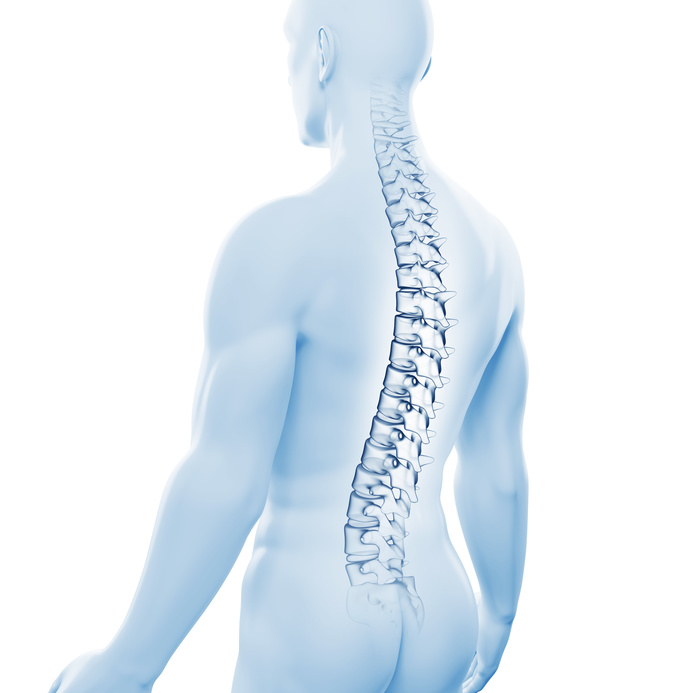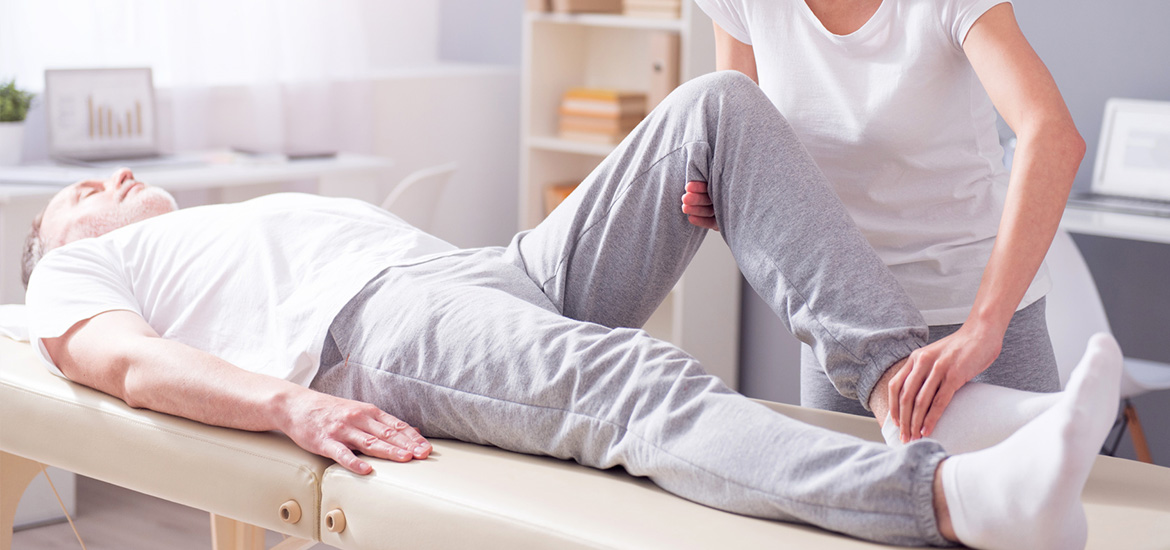What Is Osteopathy?
Osteopathy is a distinct form of manual healthcare. The principles of osteopathy are based on the links between structures within the body and their specific roles.
In particular, osteopaths have a holistic focus on the functions and the interactions between the skeleton, joints, nerves, connective tissues, muscles and internal organs.
SUMMARY
Osteopathy is a form of alternative holistic health care with particular focus on the musculoskeletal system. Professionally trained osteopaths use a range of manual manipulative techniques together with advice on diet, exercise and other lifestyle aspects to help treat and support their patients.
Osteopaths work to improve joint mobility, reduce muscle tension, improve blood circulation, and enhance healing of affected areas. There is lots evidence to support osteopathy in treatment of back pain.
Neck, shoulder, hip, pelvic, and leg pain are also common treatment areas. Osteopaths may also assist in the prevention and healing of sports related injuries. Improving posture and reducing the symptoms of arthritis are other osteopathic treatment areas.
Osteopaths practice widely in western societies. There is no requirement for a referral to an osteopath, however in most cases treatments are not covered under the public health system. The General Osteopathic Council is the best place to locate a qualified osteopath in the UK.
Osteopathy is a form of complementary medicine that is applied to detect, treat and help prevent health problems.
What Osteopathy Can Achieve
Increased Joint Mobility
Improving the degree to which an articulation (the joint, where two bones meet) is allowed to move before being restricted by surrounding tissues such as ligaments, tendons or muscles. Mobility is understood as the range of uninhibited movement around a joint.
Reduction in Muscle Tension
Muscle tension is a typical reaction to stress on the body. Tensing the muscles is a reflex to protecting against injury and pain. However, chronic muscle tension is unhealthy and can lead to other disorders, such as tension headaches or migraines. By reducing the build-up of stress on the muscles, the body can relax and this will help to minimise other potential health complications.
Improve Blood Supply To The Tissues
Optimal blood circulation is essential for a healthy body. It helps to support the cardiovascular system and healthy muscles. When blood circulation is optimised, the amount of oxygen-rich blood distributed throughout the body is enhanced. This helps to boost the immune system, improve cellular regeneration, and supports healthy organ function.
Accelerated Healing
Osteopathy can help to support the body’s healing mechanisms by improving blood circulation and decreasing muscle tension. Enhancing blood flow to the tissues is particularly important, especially when recovering from injury or illness.
Improved blood flow increases the delivery of oxygen and nutrients to the tissues. This can help to accelerate healing and speed-up recovery times. Easing muscle tension is also important as this will assist to decrease inflammation and support faster healing.
Educating and encouraging patients to practice holistic health care
Patients practise an integrated approach to health care that treats the “whole” person, not simply symptoms and disease. Mind and body are integrated and inseparable.
Why Is Osteopathy Effective?
Through a range of manual techniques, osteopaths aim to restore the normal structure and function of the body’s joints and tissues. This can help to re-establish optimal mobility, improved nerve function and stabilised lymph and blood flow. These outcomes are achieved through massage, stretching and physical manipulation.
Osteopathy is classed as a complementary or alternative medicine (CAM) that is separate from conventional western medicine. The use of osteopathy is not necessarily founded on scientific evidence, although conventional medical techniques may also be incorporated into treatment plans.

Which Conditions Can Be Treated By Osteopathy?
Generally people who see an osteopath are seeking treatment for conditions that affect their joints, bones and muscles. Some common situations are:
Neck pain
Neck pain is a common problem. It can be caused by a range of factors including poor posture, nerve irritation and osteoarthritis. Osteopaths can use a range of manual manipulations to help reduce muscular tension in the neck. The joints in the upper back and neck are also treated to restore normal moment.
The specific treatment plan depends on the individual. In some instances other areas of the body, such as the back and shoulders, may also require therapy to relieve overall tension. Advice on posture and stretching exercises may be offered to help continue to relax the joints and muscles. In some cases, an osteopath may refer a patent to another specialist or general practitioner for additional treatment or tests.
Back pain
Back pain is one of the most common reasons why people visit osteopaths. Patients seek osteopathy for treating a wide range of spinal discomfort, including chronic back pain, acute back pain, disc problems, sciatica, mechanical back pain, osteoarthritis and ankylosing spondylitis.
There is a good evidence for using osteopathy to effectively treat back pain, especially chronic and sub-acute lower back pain. Through massage and other mechanical manipulation, osteopaths assist to relieve tension and loosen the joints.
Depending on the patient’s individual diagnosis other areas of the body such as the neck and hips may also be treated to ease back pain. Osteopaths will also discuss possible causes for back pain, such as repetitive straining or poor posture. They may recommend certain lifestyle changes to minimise and future back pain.
Shoulder pain
Shoulder pain can be caused by many different conditions. It is commonly a mechanical problem resulting from sporting injuries. In other cases it can be due to other health conditions or linked to upper back or neck problems. Some of the most common causes of neck pain include frozen shoulder or adhesive capsulitis, referred shoulder pain, osteoarthritis, shoulder instability, rotator cuff problem and acromioclavicular joint pain.
The complexity of shoulder pain can mean that treatment requires a long-term approach. Once the cause is determined, an osteopath will devise a treatment pain. This may involve massage, stretching techniques, and rhythmical articulation. The aim is to enhance shoulder movement and decrease muscle tension in the shoulder.
Specific exercises and posture changes may be advised depending on the diagnoses. In some cases, further tests may be required. These may include scans and x-rays.
Pelvic, hip or leg pain
Pelvic, leg or hip pain can be the result of a combination of factors and it is important to be correctly diagnosed. In some cases it is due to strained, tight or overused muscles in the leg, hip or pelvic region. In other circumstances it can originate from an injury, such as a fall. Or, other factors such as poor posture.
It is not uncommon for hip or pelvic pain to be related to an overarching condition, such as osteoarthritis. Although it is not possible to cure osteoarthritis, the symptoms may be better managed through assistance from an osteopath.
Manual manipulation of the joints and muscles during an osteopath appointment can help to improve mobility and reduce the tension around the affected area. This may also involve treating areas of the back to future relieve tension in other zones of the body. If necessary, an osteopath may also request x-rays or other tests.
In any case, investigations or treatments offered by an osteopath will take a holistic approach. This may also include assessing nutrition and exercise routines, especially as hip, leg and pelvic pain are sometime associated with excessive weight.
Poor posture
Poor posture is closely linked joint and muscle pain. Having good posture is essential to overall health as it allows the body to operate more efficiently.
Problems such as poor circulation, back pain, joint degeneration, headaches, muscle fatigue and rounded shoulders are inherently linked to poor posture. By improving posture it is possible to relieve back pain and other commonly associated aliments.
Osteopaths work to improve posture by providing exercises to strengthen postural muscles, educating patients about ergonomics and ‘good’ postures. They also may work with the patient to manually improve muscular flexibility and enhance joint motions throughout the spine and extremities.
Arthritis
Arthritis cannot be cured through osteopathy. However, it can help to reduce symptoms. Arthritis is characterised by swelling, inflammation, pain and stiffness of the joints. It commonly affects the knee, hip, neck, toes, hands and back joints.
Osteopaths can use gentle massage and manipulative techniques to help ease some of the symptoms. The treatment plan will depend on the individual patients. In many cases an osteopath will focus on supporting general mobility of the muscles and joints.
Often osteopaths will work on the surrounding muscles to help alleviate pain and stiffness. This also improves lymphatic drainage to minimise swelling. They may also provide advice on different ways to decrease inflammation.
Exercise, posture, diet and lifestyle changes also play an important role in managing arthritis. Osteopaths will discuss these holistic approaches to reduce arthritis symptoms.
Sporting injuries
Osteopaths are often engaged to help people prevent or overcome sporting injuries. Some of the most commonly treated areas are associated with elbow, wrist and shoulder injuries, back and neck strains, pelvic and hip injuries as well as ankle, leg and knee injuries.
Osteopathic treatments can also be preventative and help to minimise the risk of acquiring a sporting injuries. In these instances, treatments typically involve manual manipulations, including stretching, inhibition, and mobilisation of the soft tissues. These techniques can enhance strength, elasticity, mobility, endurance and performance.
Osteopaths can also provide advice on different stretches to assist in warming-up and warming-down the body when participating in exercise or sporting activities. Good nutrition and other lifestyle improvements may also be discussed.
These are the traditional areas of practice. However, there are osteopaths who also claim to have the ability to treat conditions not directly linked to joints, bones and muscles. This may include migraines, digestive disorders, colic, depression, stress, and painful menstruation; among other ailments.
However, the effectiveness of osteopathy for treating these conditions is not necessarily widely accepted within the medical fraternity.
How Are Osteopaths Trained & Qualified?
Osteopaths are tertiary trained healthcare professionals. To become an osteopath, students must complete a mandatory four to five years of training, depending on the country where they are qualifying.
This degree includes extensive practical and clinical experience with foundations in health and medical science. Osteopaths must study subjects such as pathophysiology, neuroscience, anatomy, nutrition, biomechanics, pharmacology, and physiology.
Osteopaths must develop the skills to identify and develop a working diagnosis to provide treatment and rehabilitation to patients with disabilities and physical disorders. In some cases, this also includes referrals to other specialists for a collaborative response to patient care. Osteopaths focus on primary care and are trained to assess patients holistically so that they can work together with the patient for better health promotion and disease prevention.

Clinical Studies Prove That Osteopathy Works
Like all alternative therapies, there is an element of scepticism surrounding osteopathy and its benefits. However, there is a growing body of research which does support the use of osteopathy, particularly in the treatment of persistent lower back pain. Researchers have examined at the effects of osteopathy on low back pain in a range of patients, from active military personnel through to obese patients1, 2, 3.
In 2005, the journal of MBC Musculoskeletal Disorders published a systematic review and meta-analysis of randomised controlled trials assessing the effects of osteopathic manipulative treatments (OMTs) for lower back pain4. The authors concluded that OMT can significantly reduce lower back pain. However, Licciardone and colleagues also noted that more standardised research is necessary to determine how these treatments work and if the benefits are long lasting.
In 2014 a research paper was published evaluating the effects of OMTs on pregnant and postpartum women suffering from acute and chronic non-specific lower back pain5. The researchers assessed the success of the osteopathic treatment three months after the initial consultation. They concluded that even after three months the patients still reported a significant improvement in lower back function and decreased pain. However, again, further high-quality, randomised controlled trials are necessary.
It is important to note that there is large variation in the scope of practice associated with osteopathy. There are clear professional differences in the manual techniques used in spinal manipulation. This can make it difficult to assess how these methods affect the body, both during therapy and throughout the time that follows.
Until the results of further detailed research are available there is limited support for the use of OMTs to effectively treat all forms of shoulder, neck and limb pain. This does not mean that osteopathy is ineffective; rather this form of treatment may not work for all patients and more clinical research is necessary.
Health conditions unrelated to the musculoskeletal system are unlikely to be remedied through osteopathy.

History of Osteopathy
The foundations of osteopathy where established in the 19th century by an American physician and surgeon, Andrew Taylor Still. He was one of the first physicians to promote preventative medicine.
Still was a strong believer in physicians treating the underlying disease, not just its symptoms. Osteopathic treatment centres on providing the body with the best opportunity to heal and rehabilitate through its own biomechanical functions.
Philosophy of Osteopathy
The practice philosophy identifies the well-being of an individual as being dependent upon the correct functioning of the body’s structural components.
Therefore, osteopathy focuses on physical manipulation, stretching and massaging the body to achieve positive health outcomes.
Surgery or pharmaceutical interventions do not have a role in osteopathic treatments. However, depending on the condition, these interventions may be considered as complementary treatments.
How to Access Osteopathy
As osteopathy is not a conventional medicine, treatment is not widely available through the NHS or other public health care service providers. However, general health practitioners will be able to advise if osteopaths are available in your area.
There is no requirement for a referral to see an osteopath privately and many health insurers will provide cover for osteopathic treatments. The cost for treatment can vary between from £35 to £50 for a 30-40 minute session.
In the UK, practicing osteopaths must be registered with the General Osteopathic Council (GOsC). By searching the GOsC register, it’s possible to find a qualified osteopath in the UK. Similar regulatory bodies oversee osteopaths in different countries.
Product Guide: Joint Food Supplements
Several good combination preparations for joints also contain glucosamine, chondroitin and MSM. As the health of the joint cartilage depends on many factors, combination preparations are usually superior to individual active ingredients.
You can purchase glucosamine or MSM directly from your pharmacy as a dietary supplement. Likewise, numerous recommendable remedies with good customer reviews can be found on amazon, some of which we have selected here:
Bibliography
- Cruser, dA, et.al (2012). A randomized, controlled trial of osteopathic manipulative treatment for acute low back pain in active duty military personnel. Journal of Manual and Manipulative Therapy. Volume 20, Issue 1, (pp. 5-15).
- Licciardone, J. et. al. (2013). Osteopathic manual treatment and ultrasound therapy for chronic low back pain: a randomized controlled trial. Annals of Family Medicine. Volume 11, Issue 2, (pp. 122-9)
- Vismara, L. et. al. (2012). Osteopathic manipulative treatment in obese patients with chronic low back pain: a pilot study. Manual Therapy. Volume 17, Issue 5, (pp. 454-5)
- Licciardone, J., Brimhall, A. and King, L. (2005). Osteopathic manipulative treatment for low back pain: a systematic review and meta-analysis of randomized controlled trials. MBC Musculoskeletal Disorders. Volume 6, Issue 43, DOI: 10.1186/1471-2474-6-43
- Franke, H, Franke, J. and Fryer, G. (2014). Osteopathic manipulative treatment for nonspecific low back pain: a systematic review and meta-analysis. MBC Musculoskeletal Disorders. Volume 15, doi: 10.1186/1471-2474-15-286






